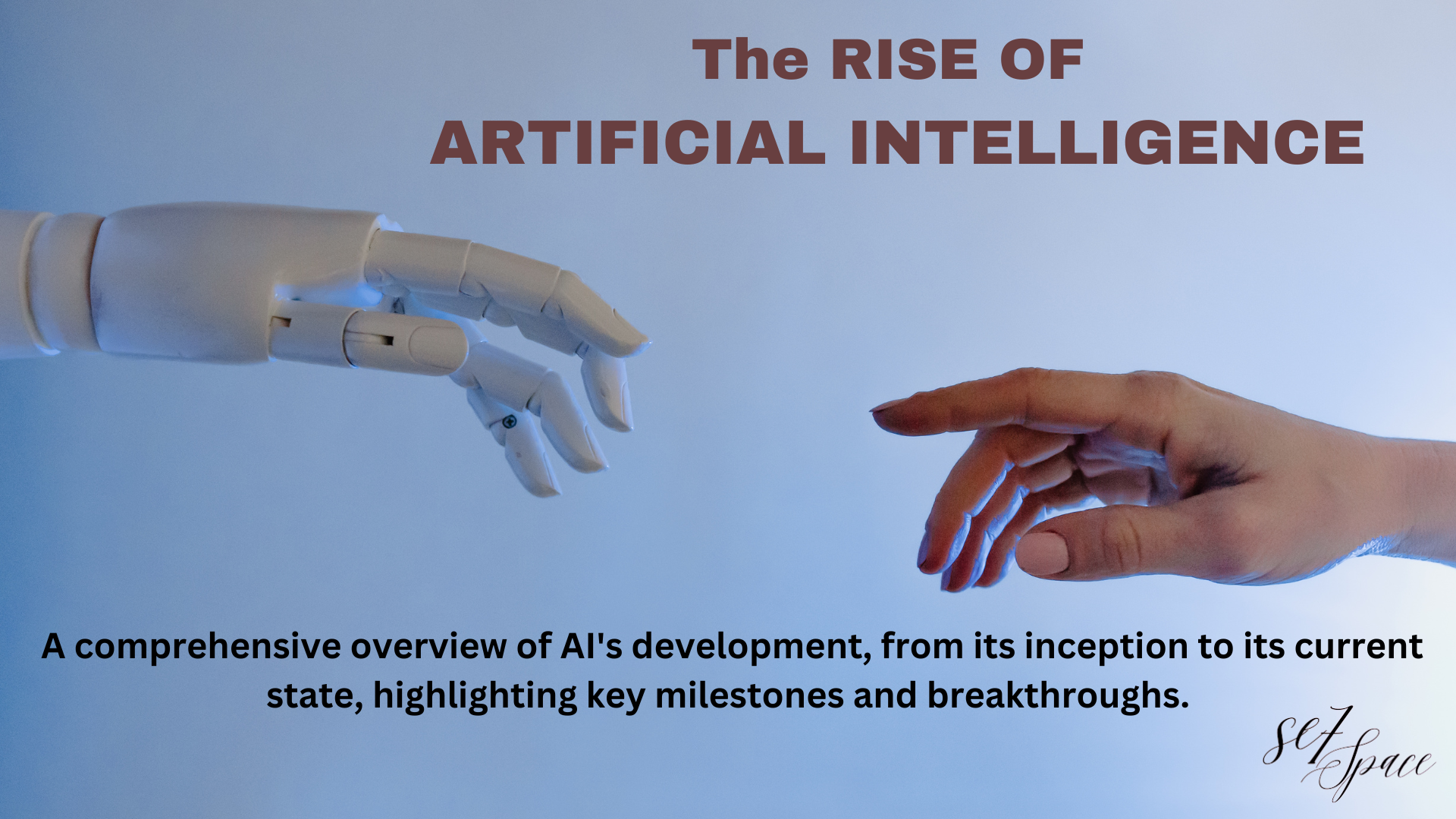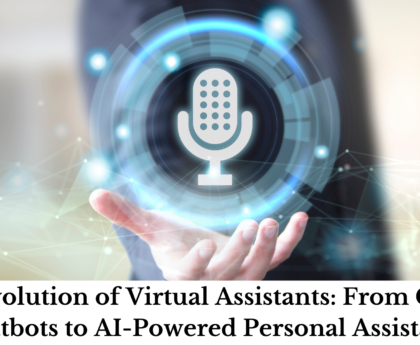Introduction
Artificial Intelligence (AI), as one of the most transformative technologies of our era, has revolutionized numerous facets of our daily lives. From virtual assistants and personalized recommendations to cutting-edge medical diagnoses, AI’s impact is undeniable. To truly appreciate the significance of AI today, it is essential to delve into its historical journey. In this blog post, we will embark on a fascinating exploration of the rise of Artificial Intelligence, from its humble beginnings to the cutting-edge technologies of the present day.
The Origins of Artificial Intelligence
The roots of AI can be traced back to the early 20th century, but its formalization as a field began in the 1950s. British mathematician and computer scientist Alan Turing played a pivotal role in conceptualizing AI. In 1950, he proposed the Turing Test, a criterion for determining whether a machine could exhibit human-like intelligence. This laid the foundation for future AI research and development.
The Dartmouth Workshop, held in 1956, is often considered the birth of AI as a formal field of study. A group of researchers, including John McCarthy, Marvin Minsky, and Nathaniel Rochester, gathered to explore the possibility of creating intelligent machines. This event marked the beginning of AI research and set the stage for groundbreaking advancements.
The Foundational Years (1950s-1960s)
In the 1950s and 1960s, AI pioneers explored various logic-based approaches to emulate human intelligence. Early AI programs attempted to solve complex problems using logical reasoning. Notable examples include the Logic Theorist, developed by Allen Newell and Herbert A. Simon, which proved mathematical theorems using symbolic sense.
In the late 1950s, the General Problem Solver (GPS) project by Newell and Simon demonstrated a more general approach to problem-solving. GPS utilized heuristic search methods to find solutions, laying the groundwork for future AI problem-solving techniques.
The AI Winter (1970s-1980s)
Despite the promising start, progress in AI faced significant challenges in the 1970s and 1980s. A period known as the “AI winter” ensued due to funding cuts and unmet expectations. The initial optimism surrounding AI had led to unrealistic projections, and when the technology failed to deliver on these expectations, funding dwindled.
During this period, researchers focused on expert systems, which attempted to replicate human expertise in specific domains. While these systems showed limited success in certain applications, they could not generalize and faced difficulties handling uncertainty.
The Resurgence of AI (1990s-2000s)
The 1990s witnessed a resurgence of interest in AI, fueled by breakthroughs in machine learning and neural networks. Machine learning algorithms allowed AI systems to learn from data, enabling them to improve their performance over time. This was a crucial step towards building more adaptable and intelligent systems.
In the late 1990s, the rise of the internet and the availability of massive amounts of data provided a fertile ground for AI’s expansion. AI researchers began to harness the power of big data to train more sophisticated algorithms, leading to significant advancements in natural language processing, speech recognition, and computer vision.
The Era of Deep Learning (2010s)
The 2010s marked a turning point in AI history with the advent of deep learning. Deep learning is a subset of machine learning that utilizes neural networks with multiple layers to process data and recognize patterns. The breakthrough moment came in 2012 when the AlexNet architecture won the ImageNet competition, significantly outperforming traditional methods in image recognition.
Since then, deep learning has revolutionized AI across various domains, including computer vision, speech synthesis, and natural language understanding. Virtual assistants like Siri and Alexa have become an integral part of modern life, thanks to advancements in deep learning algorithms.
AI Today: State of the Art
In the present day, AI has permeated numerous industries, enhancing efficiency and transforming processes. In healthcare, AI is making strides in medical imaging analysis, drug discovery, and personalized treatment plans. AI-powered diagnostic tools aid medical professionals in providing more accurate and timely diagnoses, ultimately improving patient outcomes.
The finance industry has also embraced AI to detect fraud, optimize investment strategies, and improve customer experiences. AI-driven algorithms process vast amounts of financial data to make informed decisions, enabling better risk assessment and portfolio management.
Moreover, AI’s influence on manufacturing and automation is undeniable. Robots equipped with AI capabilities collaborate with human workers, streamlining production processes and enhancing workplace safety.
AI and Robotics
The synergy between AI and robotics has led to groundbreaking innovations. Collaborative robots, known as cobots, work alongside humans, augmenting their capabilities and increasing overall productivity. These cobots are designed to be safe and easily programmable, allowing for efficient collaboration in diverse industries.
Looking to the Future
As AI continues to advance, it is crucial to address the challenges and ethical considerations it presents. AI bias, data privacy, and potential job displacement are issues that demand attention. Striking a balance between innovation and responsible development is essential to harnessing AI’s full potential for the benefit of society.
The future holds immense promise for AI. In environmental sustainability, AI is being applied to climate modeling, resource management, and renewable energy optimization. In personalized medicine, AI enables tailored treatments based on individual health data.
Collaborative Intelligence
The future of AI lies not in replacing humans but in collaboration. Collaborative intelligence, where humans and AI systems work together, presents exciting possibilities. As AI becomes more integrated into our lives, understanding and leveraging its capabilities will be key to harnessing its full potential.
Conclusion
The rise of Artificial Intelligence has been a remarkable journey, from its conception as a theoretical concept to its current position as a transformative force. The historical perspective helps us appreciate the challenges and breakthroughs that shaped AI’s evolution.
Today, AI permeates our daily lives, revolutionizing industries and empowering humanity with unprecedented capabilities. As we venture into the future, it is crucial to ensure responsible and ethical development, fostering collaboration between humans and AI to create a world where technology serves the greater good. Embracing this new era of collaborative intelligence, we can unlock the true potential of AI and build a brighter future together.





